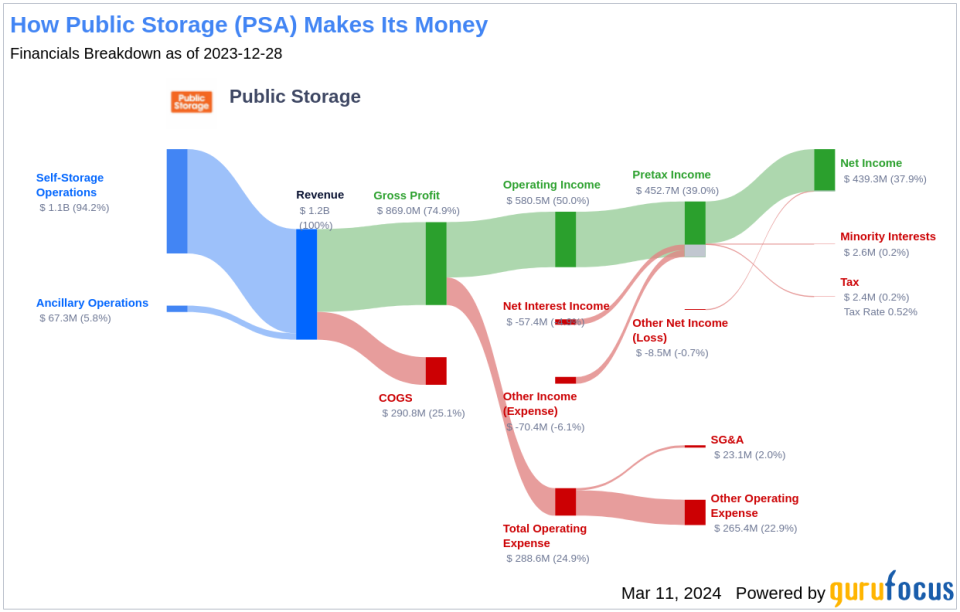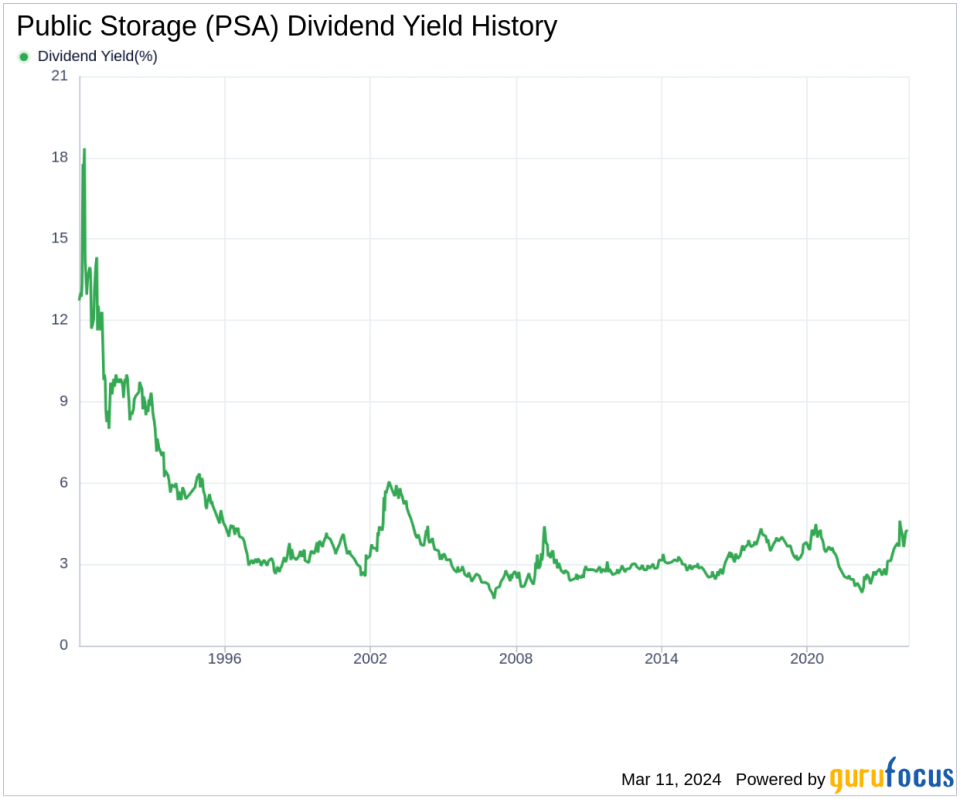Public Storage's Dividend Analysis
Assessing the Sustainability and Growth of Public Storage's Dividends
Public Storage (NYSE:PSA) recently announced a dividend of $3 per share, payable on 2024-03-28, with the ex-dividend date set for 2024-03-12. As investors look forward to this upcoming payment, the spotlight also shines on the company's dividend history, yield, and growth rates. Using the data from GuruFocus, let's look into Public Storage's dividend performance and assess its sustainability.
What Does Public Storage Do?
This Powerful Chart Made Peter Lynch 29% A Year For 13 Years
How to calculate the intrinsic value of a stock?
Public Storage is the largest owner of self-storage facilities in the U.S. with more than 3,000 self-storage facilities in 40 states and approximately 215 million square feet of rentable space. Through equity interests, it also has exposure to the European self-storage market through Shurgard Self Storage. The company also has a merchandise business, a third-party property management business, and an insurance business that offers products to cover losses for the goods in self-storage facilities.
A Glimpse at Public Storage's Dividend History
Public Storage has maintained a consistent dividend payment record since 1985, with dividends currently distributed on a quarterly basis. Notably, Public Storage has increased its dividend each year since 1992, earning it the status of a dividend aristocrata title reserved for companies with at least 25 consecutive years of dividend increases.
Below is a chart showing annual Dividends Per Share for tracking historical trends.
Breaking Down Public Storage's Dividend Yield and Growth
As of today, Public Storage boasts a 12-month trailing dividend yield of 4.09% and a matching 12-month forward dividend yield, indicating consistent dividend projections. Over the past three years, Public Storage's annual dividend growth rate was 14.50%, which tapered to 6.00% per year over a five-year span. The decade-long annual dividends per share growth rate stands at 6.10%.
Considering Public Storage's dividend yield and five-year growth rate, the 5-year yield on cost is approximately 5.47%.
The Sustainability Question: Payout Ratio and Profitability
To assess the sustainability of the dividend, one should evaluate the company's payout ratio. Public Storage's dividend payout ratio is currently 1.06, which may raise concerns about the sustainability of its dividends. However, the company's strong profitability rank of 9 out of 10, as well as a consistent record of positive net income over the past decade, suggest good profitability prospects that could support dividend payments.
Growth Metrics: The Future Outlook
Public Storage's growth rank of 9 out of 10 signals a strong growth trajectory. The company's revenue per share and 15.40% average annual 3-year revenue growth rate outperform 86.2% of global competitors. Additionally, Public Storage's 19.40% average annual 3-year EPS growth rate and 9.40% 5-year EBITDA growth rate outperform 72.68% and 73.07% of global competitors, respectively, highlighting its earnings growth capability which is crucial for sustaining dividends.
Next Steps
In conclusion, Public Storage's dividend history is marked by consistent growth and a commitment to returning value to shareholders. Despite a high payout ratio that may seem concerning, the company's robust profitability and strong growth metrics provide reassurance about the sustainability of its dividends. Investors considering Public Storage for its dividend potential should also weigh these factors alongside future industry trends, regulatory changes, and strategic company initiatives. Will Public Storage continue its legacy as a dividend aristocrat in the years to come? For those seeking high-dividend yield investments, GuruFocus Premium offers a comprehensive High Dividend Yield Screener to discover similar opportunities.
This article, generated by GuruFocus, is designed to provide general insights and is not tailored financial advice. Our commentary is rooted in historical data and analyst projections, utilizing an impartial methodology, and is not intended to serve as specific investment guidance. It does not formulate a recommendation to purchase or divest any stock and does not consider individual investment objectives or financial circumstances. Our objective is to deliver long-term, fundamental data-driven analysis. Be aware that our analysis might not incorporate the most recent, price-sensitive company announcements or qualitative information. GuruFocus holds no position in the stocks mentioned herein.
This article first appeared on GuruFocus.


